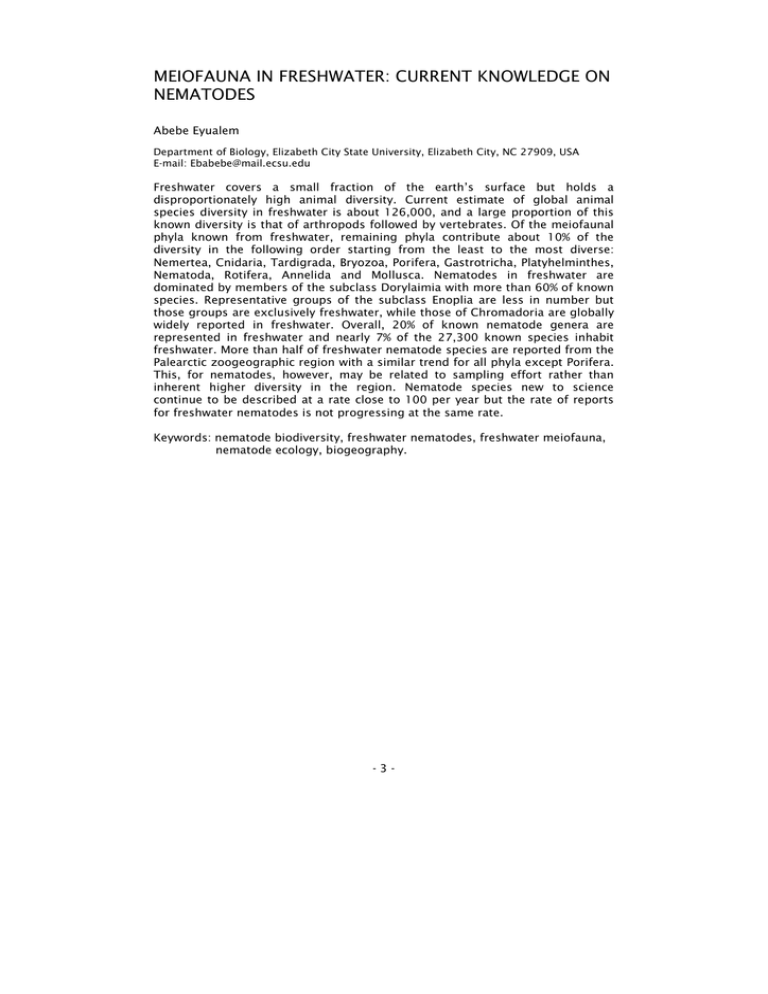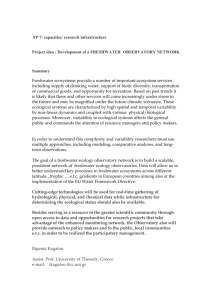MEIOFAUNA IN FRESHWATER: CURRENT KNOWLEDGE ON NEMATODES Abebe Eyualem
advertisement

MEIOFAUNA IN FRESHWATER: CURRENT KNOWLEDGE ON NEMATODES Abebe Eyualem Department of Biology, Elizabeth City State University, Elizabeth City, NC 27909, USA E-mail: Ebabebe@mail.ecsu.edu Freshwater covers a small fraction of the earth’s surface but holds a disproportionately high animal diversity. Current estimate of global animal species diversity in freshwater is about 126,000, and a large proportion of this known diversity is that of arthropods followed by vertebrates. Of the meiofaunal phyla known from freshwater, remaining phyla contribute about 10% of the diversity in the following order starting from the least to the most diverse: Nemertea, Cnidaria, Tardigrada, Bryozoa, Porifera, Gastrotricha, Platyhelminthes, Nematoda, Rotifera, Annelida and Mollusca. Nematodes in freshwater are dominated by members of the subclass Dorylaimia with more than 60% of known species. Representative groups of the subclass Enoplia are less in number but those groups are exclusively freshwater, while those of Chromadoria are globally widely reported in freshwater. Overall, 20% of known nematode genera are represented in freshwater and nearly 7% of the 27,300 known species inhabit freshwater. More than half of freshwater nematode species are reported from the Palearctic zoogeographic region with a similar trend for all phyla except Porifera. This, for nematodes, however, may be related to sampling effort rather than inherent higher diversity in the region. Nematode species new to science continue to be described at a rate close to 100 per year but the rate of reports for freshwater nematodes is not progressing at the same rate. Keywords: nematode biodiversity, freshwater nematodes, freshwater meiofauna, nematode ecology, biogeography. -3-






